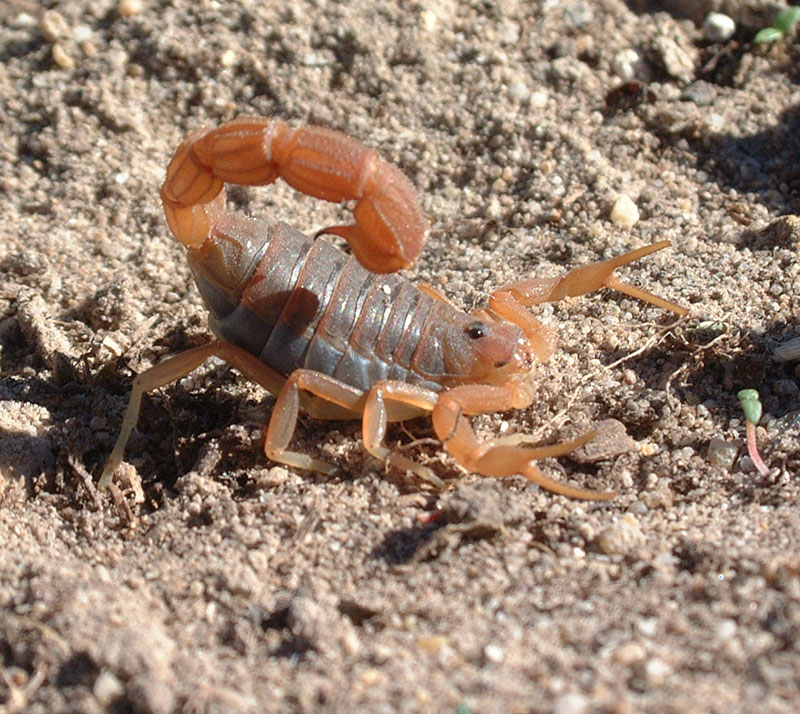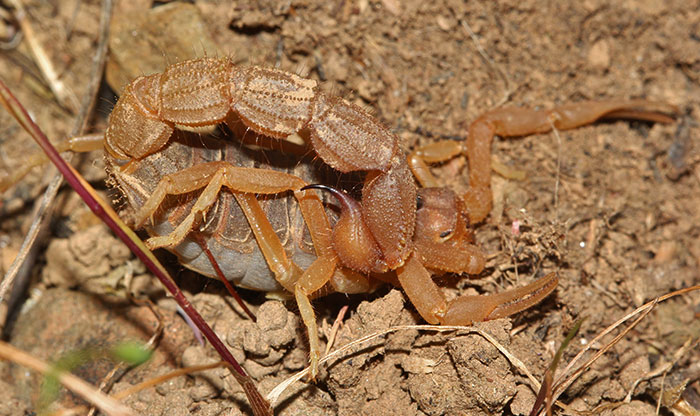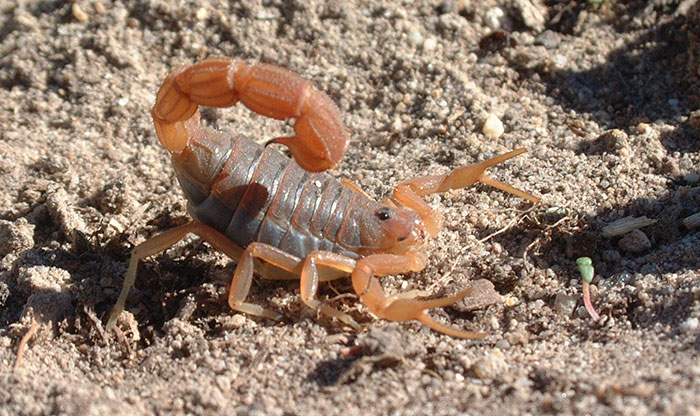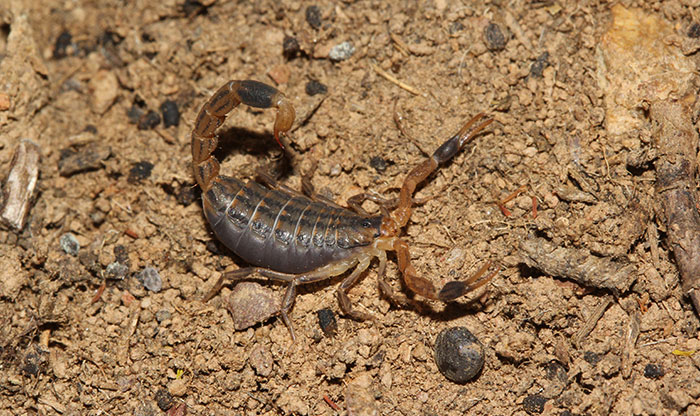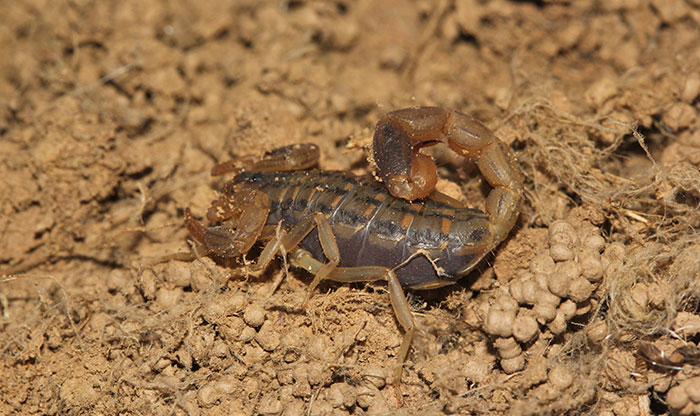Viewed with terror and often persecuted, scorpions are some of southern Africa’s most feared and misunderstood creatures. South Africa is home to a rich scorpion fauna, and if one takes the time to learn a little more, they are in fact truly fascinating. This week we will take a closer look at the scorpions found in the Renosterveld of the Overberg and how we can best peacefully live alongside these extraordinary and curious creatures.
Scorpions are found on six of seven continents on earth, with 2 352 different species currently known worldwide. They can be found living in environments from tropical rainforest, to grasslands and snowy mountain tops at more than 5 500m asl. More than 135 scorpion species are found in southern Africa.
Above: Parabuthus capensis
Scorpions are highly secretive creatures, becoming active mostly at night. However, the average scorpion spends more than 92% of its life without moving due to their incredibly slow metabolisms. This means that some scorpion species are able to survive without food for more than a year at a time.
With the earliest known scorpion fossils dating back more than 425 million years, scorpions have been identified as one of the earliest form of land animal. This makes them even older than the first dinosaurs to roam the earth. Some of the earliest scorpions inhabited lagoons and estuaries and were primarily aquatic. Many early scorpion species were far larger than those seen today, growing up to a metre in length.
Scorpions are perhaps best known for being venomous, an adaptation used in hunting their prey and defending themselves against larger predators such as honey badgers. Thick tailed scorpions are able to hunt and subdue prey considerably larger than themselves. Those with larger and thicker pincers and a thin tail are weakly venomous. Those with a thick tail and thin pincers are highly venomous with their neurotoxic venom being medicinally significant.
There are four different scorpion species that are most likely to be encountered in Overberg Renosterveld.
Thick Tailed Scorpion/Dikstertskerpioen (Parabuthus capensis)
Easily identified by its thick tail, small pincers and orange-brown colour, the Thick Tailed Scorpion is the most venomous scorpion species found in Overberg Renosterveld. It sometimes hides underneath rocks and logs but constructs burrows mostly in open ground. The sting can be fatal (in rare cases) for young children and elderly people and emergency medical attention should be sought immediately following a sting.
Bark Scorpion/Boombassskerpioen (Uroplectes lineatus)
These small scorpions are most commonly found living underneath rocks or in lose bark. They are sometimes encountered in houses and are responsible for most scorpion stings in the region. The sting is painful but not deadly.
Burrowing Scorpion/Graafskerpioen (Opistophthalmus latimanus)
Like their name suggests, this scorpion species constructs burrows underneath rocks and logs. They use these burrows in order to ambush their prey. They can deliver a painful sting, but are not deadly.
Black Scorpion/Swartskerpioen (Opisthacanthus capensis)
This scorpion is easily identified by its large pincers and black colouration. It is relatively non-aggressive in comparison with other scorpion species. It is consumed as food by bat-eared foxes and some mongoose species.
Scorpions found in this part of the country are rarely known to enter houses. If they are known to occur in the area then it is advisable to shake out boots and shoes left outside at night. Firewood should also be handled with care as scorpions, particularly bark scorpions, can sometimes use a wood pile for shelter. If walking at night then closed shoes or boots should be worn.
Scorpions can be observed at night and all species will glow under a UV light. The only exception is when a scorpion has just moulted. This phenomena can last for millions of years and can also sometimes be seen in fossilised scorpion specimens. Scorpions should not be taken from the wild. It is illegal to collect and keep them and few South African species will survive long due to their specialist habitat needs.
We still know relatively little about scorpions in southern Africa, and particularly in Overberg Renosterveld. However, we do know that habitat transformation such as that threatening these Critically Endangered ecosystems is one of the main threats facing scorpions and the creatures further up the food chain that depend on them for food. It is therefore important for the ORCT to continue its vital work in conserving Overberg Renosterveld ecosystems and all the wildlife large and small that calls them home.
If you would like to consider supporting the work of the Overberg Renosterveld Conservation Trust in conserving these biodiversity and critically endangered ecosystems, more information can be found here.
If you are interested in getting your scorpion observations (photographs) identified, consider joining the Facebook Group ‘Scorpions of Africa’.
Read more about the Poison Information Helpline here.
Further Reading
Curtis-Scott, O.E. Goulding, M. Helme, N. McMaster, R. Privett, S. Stirton, C. (2020) Field Guide to Renosterveld of the Overberg, Struik Nature, Cape Town, South Africa.
Leeming, J. (2019) Scorpions of Southern Africa, Struik Nature, Cape Town, South Africa.

